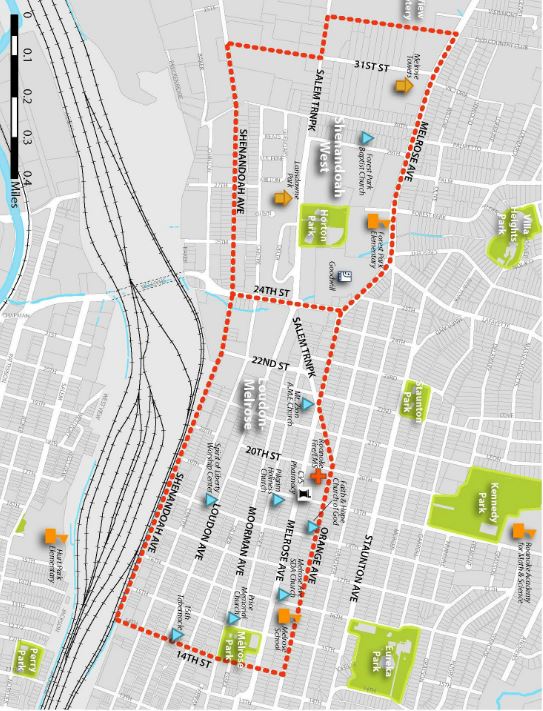
A HUD planning grant for $200,000 issued to the city’s Roanoke Redevelopment and Housing Authority in 2012 could eventually mean big changes for public housing at Melrose Towers and Lansdowne Park, and in the Loudon/Melrose-Shenandoah West neighborhood.
If a comprehensive transformation plan developed by the RRHA is approved by the U.S. Department of Housing and Urban Development (HUD) up to $30 million in construction money – supported with additional private investment – could transform one of the city’s traditionally poorer areas.
Executive Director Glenda Edwards-Goh said the RRHA received plenty of helpful feedback at a recent public information session from local residents. “We’re looking at all of the housing needs in the neighborhood,” said Edwards-Goh. As for the public housing complexes, it could mean extensive remodeling – or building new from the ground up. The initial HUD grant “allows us to engage the community in various ways, to get input from people who live [and] work in the community.”
Any transformation plan submitted must focus on housing, people and the neighborhood, said Edwards-Goh. That means private housing, education, employment opportunities, recreation and green space must be addressed as well. “Does the neighborhood need a grocery store or a community [center?]. What do people want to see?” Creating a neighborhood where people want to stay is “very much the point.”
The plan is still in the needs assessment phase as far as what to do with Lansdowne Park and Melrose Towers. Any housing unit demolished as part of the transformation plan has to be replaced as per HUD guidelines. That’s a change from the “Urban Renewal” movement of the 1960’s, when poor or blighted neighborhoods and business districts were demolished but often not replaced.
Both the planning grant and the subsequent implementation grant that could unleash funds are a competitive process; the RRHA was one of just 17 housing authorities selected for the Choice Neighborhoods Planning Grant in 2012.
Being able to secure some or all of the $30 million available “would certainly help move the transformation plan forward,” said Edwards-Goh, “but we will be looking to involve private investment and other sources of investment into this neighborhood.” That will happen only after input from local residents is considered. Roanoke City may also have some funds available via other grants for the construction phase, according to Edwards-Goh.
At the recent public information session Edwards-Goh said there was “certainly an interest” in safer neighborhoods. “People were telling us that they feel safe in the neighborhood during the day – but not so safe at night.” Others wanted to see traffic calming, bike lanes and more pedestrian crossings – more walkability in general, “so it can feel more like a neighborhood.” Some had concerns about an abundance of vacant buildings, and “what that does to a neighborhood.”
Edwards-Goh was pleased by the level of engagement and attendance at the mid-January meeting. People offered ideas on what new public housing could look like, what types of stores they would like to see, the amenities in parks and even changes at the local public library. “It was really energizing to be there.”
Now the RRHA will take that input, formulate a transformation plan, perhaps tweak it after more public comments and then submit it to HUD. The proof will be in the pudding – if it frees up federal money to make a transformation happen in that section of northwest Roanoke City.
By Gene Marrano

